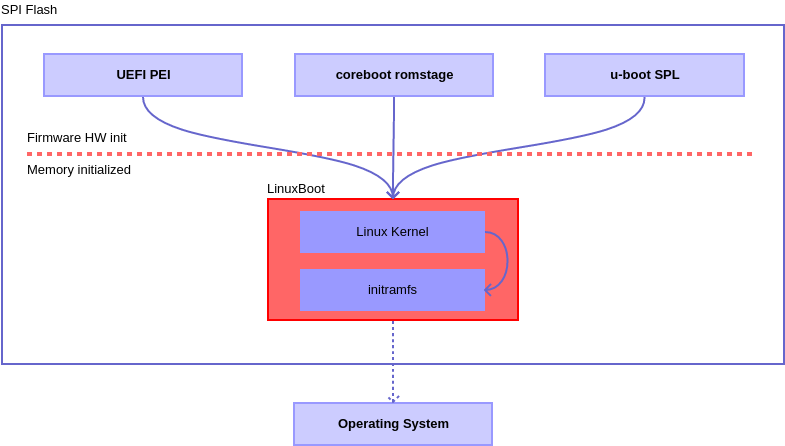简单介绍私有UEFI 固件的开源替代品——LinuxBoot
本文共 362 字,大约阅读时间需要 1 分钟。
Boot 是私有的 UEFI 固件的开源 替代品。它发布于去年,并且现在已经得到主流的硬件生产商的认可成为他们产品的默认固件。去年,LinuxBoot 已经被 Linux 基金会接受并纳入开源家族。
这个项目最初是由 Ron Minnich 在 2017 年 1 月提出,它是 LinuxBIOS 的创造人,并且在 Google 领导 coreboot 的工作。
Google、Facebook、Horizon Computing Solutions、和 Two Sigma 共同合作,在运行 Linux 的服务器上开发 LinuxBoot 项目(以前叫 NERF)。
它的开放性允许服务器用户去很容易地定制他们自己的引导脚本、修复问题、构建他们自己的 运行时环境 和用他们自己的密钥去 刷入固件,而不需要等待供应商的更新。
转载地址:http://jpax.baihongyu.com/
你可能感兴趣的文章
Nginx
查看>>
nginx + etcd 动态负载均衡实践(三)—— 基于nginx-upsync-module实现
查看>>
nginx + etcd 动态负载均衡实践(二)—— 组件安装
查看>>
nginx + etcd 动态负载均衡实践(四)—— 基于confd实现
查看>>
Nginx + Spring Boot 实现负载均衡
查看>>
Nginx + uWSGI + Flask + Vhost
查看>>
Nginx - Header详解
查看>>
Nginx - 反向代理、负载均衡、动静分离、底层原理(案例实战分析)
查看>>
nginx 1.24.0 安装nginx最新稳定版
查看>>
nginx 301 永久重定向
查看>>
nginx css,js合并插件,淘宝nginx合并js,css插件
查看>>
Nginx gateway集群和动态网关
查看>>
Nginx Location配置总结
查看>>
Nginx log文件写入失败?log文件权限设置问题
查看>>
Nginx Lua install
查看>>
nginx net::ERR_ABORTED 403 (Forbidden)
查看>>
Nginx SSL私有证书自签,且反代80端口
查看>>
Nginx upstream性能优化
查看>>
Nginx 中解决跨域问题
查看>>
nginx 代理解决跨域
查看>>
